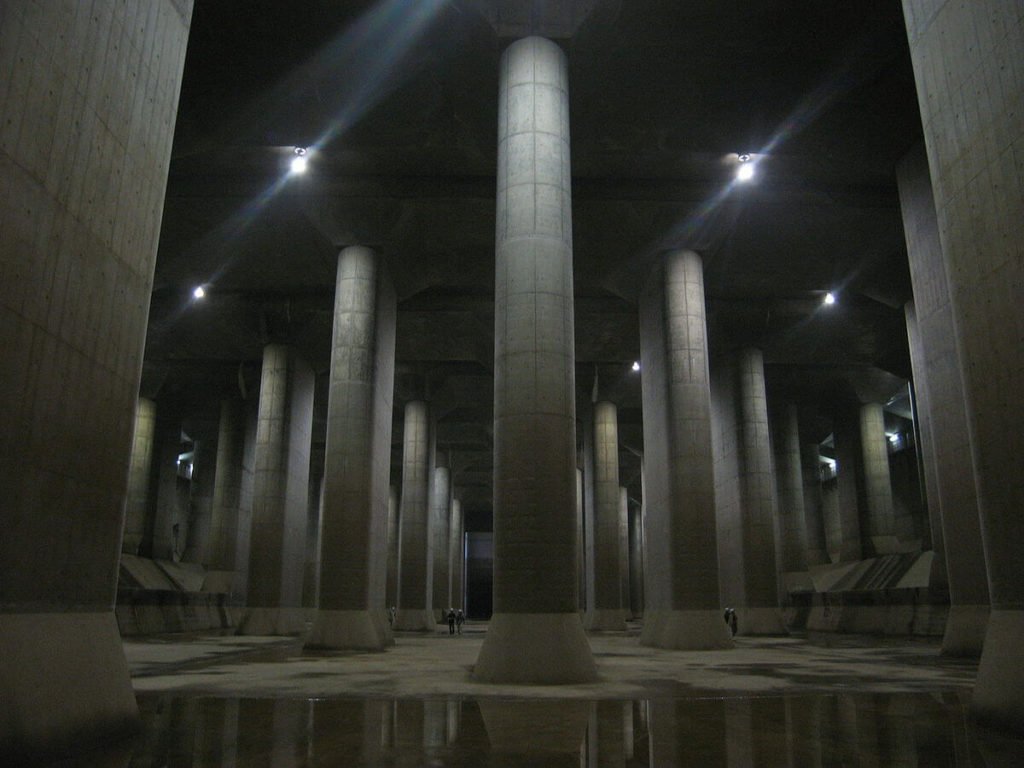Business
Mega-engineering: The world’s largest flood prevention measures
The Metropolitan Area Outer Underground Discharge Channel is one example of mega-engineering.
,

The earth is warming up at an alarming rate, and this is resulting in global warming that has brought on more extreme weather events. From worrisome smog levels, snow storms, wildfire and even drought, governments are making an effort to better prepare themselves for the ill effects of such devastating natural occurrences.
Among these devastating natural phenomena that are caused by global warming are more extreme storms. Not only do these natural events cause flooding and the loss of life, there are also economic and health implications weeks and even years after the storm has passed. The perfect examples for such an event are the Atlantic hurricanes that pummeled parts of the Caribbean Islands, particularly that of Puerto Rico. Three weeks ago, Hurricane Maria wrought havoc in the U.S. territory and left it without power and a death toll of 45. Recovery has been slow as the hurricane left the island without basic necessities like power, running water, and little supplies of medicine and fuel.
But what are governments doing to prevent enormous losses that are brought about by storms or hurricanes and flooding? Here’s a look at some of the largest flood prevention measures around the world.
Metropolitan Area Outer Underground Discharge Channel
Costing $2 billion to construct, Japan’s Metropolitan Area Outer Underground Discharge Channel is the world’s largest underground cistern that is designed to protect Tokyo from flooding. According to an estimate by the Japan Meteorological Agency, rainfall that measures over two inches per hour has increased by 30 percent in the last three decades.
The underground structure is so immense that the Statue of Liberty could fit inside the underground tank. It is designed to take in stormwater from Tokyo’s four rivers, and there are five vertical, underground cisterns that run about 250 feet deep. Tunnels connect the cisterns to a tank that is bigger than a soccer field and has ceilings held by 60-foot pillars. Industrial pumps, which are powered by engines similar to a Boeing 737 jet pumps, discharge water at a controlled pace to the Edo river, which then transports the water to Tokyo Bay.

Japan is bracing for the onslaught of powerful storms by putting up anti-flood mega-structures in place. (Photo by Dddeco via Wikimedia Commons. CC BY-SA 3.0)
Gulf Intercoastal Waterway West Closure Complex
In August 2005, New Orleans was badly damaged after Hurricane Katrina landed and killed hundreds of people and caused billions in property damage. Following this, the Gulf Intercoastal Waterway West Closure Complex was built to protect the low-lying state and prevent such damage from happening again.
Costing $1.1 billion to build, the complex is a steel structure that is composed of a water gate that is as long as a football field. In the event of a flood, the gate slowly shuts, and 11 diesel engines begin its work to pump water out of Jefferson Parish. The structure can also withstand 250 mph winds and has air conditioning and provisions to last a whole week. However, the largest flood control structure of the complex is the Great Wall of St. Bernard Parish, a 1.8 mile-long barrier that protects the city’s eastern side.
Eastern Scheldt Storm Surge Barrier
About 60 percent of the Netherlands’ population live below sea level, and the country depends on flood control systems to prevent floods from happening. The Eastern Scheldt Storm Surge Barrier is part of the country’s “Deltawerken” (Delta Works) that consist of a network of dams, sluices, locks, dikes and storm surge barriers. Also called the “Oosterschelde,” the Scheldt barrier features movable gates instead of a conventional dam. Its use proved to be effective after its completion as the tidal height was greatly reduced from 11.2 feet to 10.7 feet.
(Featured image by Mark Voorendt via Wikimedia Commons. CC BY-SA 4.0)

-

 Biotech2 weeks ago
Biotech2 weeks agoPfizer Spain Highlights Innovation and Impact in 2024 Report Amid Key Anniversaries
-

 Business1 day ago
Business1 day agoLegal Process for Dividing Real Estate Inheritance
-

 Markets1 week ago
Markets1 week agoStock Markets Surge Amid Global Uncertainty, But Storm Clouds Loom
-

 Africa6 days ago
Africa6 days agoMorocco Charts a Citizen-Centered Path for Ethical and Inclusive AI

























You must be logged in to post a comment Login